"A valid concern..." Oh please. Everyone picks the software they like and the origin of that software is an afterthought.…
News 10/5/12
Top News
From DrLyle: “Re: House committee call to suspend HITECH payments. I’m at this meeting. Farzad is keeping his cool. He says it’s just pre-election rumblings and nothing can change without major legislative work.” Several House Republicans call on HHS Secretary Kathleen Sebelius (copying CMS Administrator Marilyn Tavenner and National Coordinator Farzad Mostashari) in an October 4 letter to immediately suspend HITECH payments because the Meaningful Use bar is set too low, resulting in a program that “squanders taxpayer dollars and does little, if anything, to improve outcomes for Medicare.” It claims that $10 billion has been wasted. It also references increasing payments due to higher levels of provider coding, as well as Stage 2 rules that don’t emphasize interoperability enough, leading to “our health care system trapped in information silos, much like it was before the incentive payments.” The letter also directly challenges the HHS/ONC count of HITECH provider participants, saying that HHS is “trying to pad participation rates.”
Signers of the House letter were Rep. Dave Camp (R-MI, Chairman, Committee on Ways and Means), Rep. Fred Upton (R-MI, Chairman, Committee on Energy and Commerce), Rep. Wally Herger (R-CA, Chairman, Committee on Ways and Means, Subcommittee on Health), and Rep. Joe Pitts (R-PA, Chairman, Committee on Energy and Commerce, Subcommittee on Health). One might presume given the timing and the fact that all four signatories are Republican that there’s a political motive, although that doesn’t change the fact that you either do or don’t agree with their assessment of HITECH. If their arguments are sincere, perhaps they should have made them earlier. Also, note that their objections aren’t to the value of EHRs but rather to the value of taxpayers in subsidizing them, so reciting a list of why EMRs are inherently good is not an appropriate rebuttal, nor would a list of accomplished users like Kaiser who got free money for using something they’d already bought without taxpayer bribes.
From BadgerMom: “Re: Valley Medical Center, Renton, WA. Goes live with Epic inpatient.” Congratulations to them. Thanks for the picture.
From Horshack’s Laugh: “Re: Caradigm. The company was simply a consolidation of two non-performing assets so that GE and MSFT could get them off their respective books and write off their significant losses ($1 billion over seven years for Qualibria alone) and allow Immelt and Ballmer to save face.” Unverified. I asked that question in my interview with CEO Michael Simpson.
From THB: “Re: Epic’s succession plan. What about HIStalk’s succession plan? You have built a great open source forum, but at some point you will be the old curmudgeon (and I mean that in the nicest sense!) Believe me, Judy reads this site, as does Glen T. and the rest of them. You share what you can and keep close to the vest what you cannot (that is a fine display of TRUST).” HIStalk is to me a hobby rather than a business, and given that I do it part time (as do my far-flung co-conspirators Inga, Dr. Jayne, Dr. Travis, etc.) I don’t have a specific plan for it to continue without me, nor am I vain enough to think that the healthcare IT world will stop spinning on its axis when I stop typing. Sometimes I feel guilty that Mrs. HIStalk would get no financial benefit from my years of labor if I flamed out tomorrow, but I don’t have a solution. It’s an inherently and intentionally amateurish operation.
From Jeeves: “Re: Patrick Soon-Shiong. His announcement was a big deal. I want to point out that at the end of last year when all the pundits were doing their predictions, Travis of HIStalk Mobile was the only one that I’m aware of that said this would be the year that Patrick’s stuff becomes real.” Travis is looking good with his predictions for the year so far: (a) smart phones everywhere; (b) more research and pilots on mHealth; (c) AirStrip as the biggest mover in mHealth; (d) price transparency gets a foothold; and several others. Travis has a lot of experience (MD, startup, NGO, etc.) and you’re missing out on his insight if you haven’t signed up for e-mail alerts when he posts something new. Soon-Shiong’s announcement this week that his NantWorks group of companies has developed a package of supercomputing, high-speed networking, and mobile access that will let doctors instantly individualize cancer treatment based on the patient’s genome. I listened to the live webcast for a few minutes while I was at work and heard him taking the usual shots against outdated, MUMPS-based systems that don’t talk to each other, although I’m not sure what that has to do with his project, which in itself sounds fascinating depending on who’s paying for it and who’s making money from it. BPC has posted the full video of the all-day event, although I haven’t had time to watch it. There’s bonus footage of an extremely cool Farzad bow tie in his segment at around the 180-minute mark.
From Pick Six: “Re: Allscripts. Replacing MyWay with Pro.” An internal Allscripts e-mail says that it will standardize its small physician market offering on Allscripts Professional Product Suite, with free migration of MyWay users starting in January. The company also announced that its VAR network will be reduced from 40 to four resellers and that Pro Suite pricing will be standardized (it’s not clear from the wording whether MyWay users will get a free license or just a free migration once they’ve paid for Pro). Also not mentioned is what happens to MyWay, although the most common rumor we’ve heard is that it will be sold rather than mothballed (which makes more sense than Allscripts taking a write-off of some of its Misys acquisition costs). Allscripts is trying to consolidate platforms because of the development effort required for ICD-10, Meaningful Use Stage 2, and accountable care. The risks are that users of MyWay, rumored to be the most popular product Allscripts sells, could look elsewhere given the decision the company has forced on them. One potential winner is Aprima, which under its former name iMedica built the original version of MyWay that Misys licensed in 2007, followed by ugly disputes between the companies (see my July 2008 interview with Michael Nissenbaum). Since then, Aprima has rewritten the PM app and upgraded their version of both EHR and PM, so the gloves will come off if Aprima decides to offer an easy conversion from MyWay to their similar product, potentially also signing on some of the former Allscripts VARs who will be left scrambling. Also affected will be Etransmedia, an Allscripts partner that sells MyWay for $499 per month through Costco.
HIStalk Announcements and Requests
![]() I noticed that one of my new Twitter followers is a “healthcare visionary,” leading me to ponder how one earns that designation. Self-assigned? Or is it an advanced accreditation available through HIMSS for those over-achieving members who feel the need for additional titles? I’m going with self-assigned, so from here on out I will refer to myself as Inga HIStalk, HV. Maybe I will get Mr. H to make some ribbons for HIMSS so fellow healthcare visionaries can promote themselves. By the way, feel free to follow me and my HIStalk buddies on Twitter, connect with us on LinkedIn, and be our virtual BFFs on Facebook.
I noticed that one of my new Twitter followers is a “healthcare visionary,” leading me to ponder how one earns that designation. Self-assigned? Or is it an advanced accreditation available through HIMSS for those over-achieving members who feel the need for additional titles? I’m going with self-assigned, so from here on out I will refer to myself as Inga HIStalk, HV. Maybe I will get Mr. H to make some ribbons for HIMSS so fellow healthcare visionaries can promote themselves. By the way, feel free to follow me and my HIStalk buddies on Twitter, connect with us on LinkedIn, and be our virtual BFFs on Facebook.
![]() This week’s highlights from HIStalk Practice: a rumor and a response from e-MDs. CareCloud gives Florida International University informatics students access to its EHR. Practice owners struggle over how to allocate incentive payments for employed providers.The Ohio AFP pilots a project to transform practices to the PCMH model, train medical students, and recruit physicians to practice in the state. Julie McGovern of Practice Wise offers tips for physicians to train for their EHR training – and don’t miss the comment from MarathonMan. You know what makes me happy: that two-second signup for HIStalk Practice e-mail updates. Thanks for reading.
This week’s highlights from HIStalk Practice: a rumor and a response from e-MDs. CareCloud gives Florida International University informatics students access to its EHR. Practice owners struggle over how to allocate incentive payments for employed providers.The Ohio AFP pilots a project to transform practices to the PCMH model, train medical students, and recruit physicians to practice in the state. Julie McGovern of Practice Wise offers tips for physicians to train for their EHR training – and don’t miss the comment from MarathonMan. You know what makes me happy: that two-second signup for HIStalk Practice e-mail updates. Thanks for reading.
![]() Am I the luckiest gal in HIT or what? That’s Dr. Mostashari and Dr. Lyle Berkowitz holding up an I
Am I the luckiest gal in HIT or what? That’s Dr. Mostashari and Dr. Lyle Berkowitz holding up an I![]() Inga sign at today’s CMIO Leadership Forum. (Eat your heart out, BFF Dr. Jayne.)
Inga sign at today’s CMIO Leadership Forum. (Eat your heart out, BFF Dr. Jayne.)
Welcome to new HIStalk Platinum Sponsor VMware, which offers dependable, always-on frontline clinical systems access. Connect to your mobile clinical desktop from anywhere, view medical images, use any digital device securely with no clumsy security steps, and save time with a clinical desktop that follows you everywhere with fast logins to patient care systems. VMware offers cost-saving, secure, and IT-friendly solutions for virtualization, non-stop point-of-care desktops, trusted cloud security and compliance, and zero-downtime continuity and recovery. Thanks to VMware for supporting HIStalk.
From my obligatory YouTube cruise, I found the above VMware video wrap-up of HIMSS12. I like that they pictured and thanked their employees who staffed the booth.
Thanks to Philips Healthcare, supporting HIStalk as a Platinum Sponsor. The company’s solutions address interoperability (IntelliBridge Enterprise and Bedside to connect Philips products with others); clinical decision support (sepsis monitoring, vital signs and alert trending, EKG analysis, cardiac decision support); mobility (OB TraceVue for iPad-powered fetal information, HeartStartMRx ECG to smartphone, and IntelliSpace Event Management); and telehealth (eICU, IntelliSpace PACS, and Home Telehealth Solutions). I interviewed CMIO Joe Frassica, MD in August, who not only explained the company’s offerings well, but also got promoted to CMIO/CTO/VP right after the interview ran, according to his LinkedIn profile. Thanks to Philips Healthcare for supporting my work.
Here’s a brand new Philips Healthcare video that seems appropriate for Breast Cancer Awareness Month.
As a change of pace, I’ll refrain this week from urging you to sign up for e-mail updates and Like us and all that. Instead, I will suggest just one course of action: tell your colleagues you get news and opinions from HIStalk. I’ve received many e-mails from new readers and new sponsors who admitted that they hadn’t heard of HIStalk until people whose opinion they valued kept telling them they should read it. I appreciate that a lot.
I’ll be taking a little break next week, although I’m sure I won’t be able to resist the laptop’s siren song. My hiatus is minuscule compared to that of Vince Ciotti, who’s enviably taking his bride of 40 years to Europe for the whole month of October to re-live their honeymoon (and unlike me, he’s vowing to stay off the laptop). That means HIS-tory will return in November, and I can honestly say I will miss it since I enjoy every one of them.
Acquisitions, Funding, Business, and Stock
Homecare Homebase closes $75 million in senior securing financing from CIT Group.
Peak Health Solutions acquires the assets of consulting firm Health Data Essentials.
Sales
Managed care health plan Kern Health Systems selects McKesson’s VITAL Care Management programs to provide members with care management and educational materials.
Scottsdale Healthcare and Scottsdale Physician Organization will implement Harris Corporation’s Clinical Integration Solution to connect its hospitals, physicians, labs, and other providers.
Booz Allen Hamilton Holding announces 35 new federal and private healthcare contracts totaling more than $112 million in August and September.
People
Patient flow software provider Central Logic names Steve Erickson (SageCreek Partners) CFO.
Stephen Lawrence (Southern Illinois Healthcare Foundation) joins the Lincoln Land HIE as executive director.
Kaiser Permanente Chairman and CEO George Halvorson announces his retirement effective December 2013.
Announcements and Implementations
Inova (VA) becomes the first organization to participate in the ConnectVirginia HIE.
The New England Healthcare Exchange Network (NEHEN) selects the Massachusetts eHealth Collaborative to take over its executive management, business development, and operations management.
Mediware Information Systems earns updated 510(k) clearance from the FDA for its core blood management software products.
Penn State Milton S. Hershey Medical Center implements an interconnected CareFusion and Cerner solution that centralizes clinical information between the Pyxis MedStation 4000 system and Cerner Millennium EHR using Cerner’s CareAware iBus integrated device connectivity architecture.
Horm Memorial Hospital (IA) and Faulkton County Memorial Hospital (SC) beta-test Healthland’s Centriq Clinic, an ambulatory care solution for rural physicians.
Iowa Specialty Hospitals, The Gabrielson Clinic, and Orthopedic Specialists go live on EMR Oct. 8. The hospitals and clinics are all part of University of Iowa Healthcare, so that’s probably Epic.
CliniComp commits to meeting ONC Stage 2 MU certification with its Essentris EMR.
AHIMA calls for improved EHR patient documentation standards and principles at its conference this week.
Government and Politics
The Medicare Fraud Strike Force charges 91 individuals — including doctors, nurses, and other medical professionals — for falsely billing the government $492 million, including more than $230 million in home health fraud, $100 million in mental health fraud, and $49 million in ambulance transport fraud. Half the people, not surprisingly, operated out of Miami.
Technology
Qualcomm Foundation awards Scripps Health a three-year, $3.75 million grant to develop wireless medical devices, including biosensors that are inserted into the blood stream for disease detection; a mobile app that captures medical data from biosensors and transmits it to patients’ smart phones; and a handheld device to detect genetic variations that may prevent particular medications from working correctly.
Other
St. Francis Health Center’s (KS) will lay off eight patient accounting employees as a result of the hospital’s November 1 transition to Epic.
A Wall Street Journal article called “Hospital Horrors” covers a newly published book on hospital transparency written by a Hopkins surgeon. He says state medical boards do a poor job of policing doctors, hospitals are pushed by lower reimbursement to increase volumes to unsafe levels, and bad treatments pay better than good ones in many cases. He quotes a recent Hopkins survey of employees of 60 high-quality hospitals, where more than half of the respondents said they would not feel comfortable receiving care in the unit in which they work. I’ve said that many times: those of us working in the healthcare system are a lot more scared of it than laypeople when we become patients.
Friday is the premiere of “Escape Fire: The Fight to Rescue American Healthcare.” Variety gave it a pretty good review from its Sundance screening in January, but said it should have included more about how lobbying keeps the healthcare industry safe from political action.
Weird News Andy says he might believe the woman who blames lupus-triggered delusions for causing her to strip naked and chant religious phrases outside a high school, but that doesn’t explain why she was joined by her two adult daughters and teenage son. The adults got probation after pleading guilty to indecent exposure.
![]() A Utah man is convicted of disorderly conduct and charged a $140 fine after paying a disputed $25 doctor bill in pennies. Apparently the practice did not appreciate having 2,500 pennies dumped onto the receptionist’s desk. Personally, I think his approach was creative, and I bet quite liberating.
A Utah man is convicted of disorderly conduct and charged a $140 fine after paying a disputed $25 doctor bill in pennies. Apparently the practice did not appreciate having 2,500 pennies dumped onto the receptionist’s desk. Personally, I think his approach was creative, and I bet quite liberating.
![]() Just in time for Breast Cancer Awareness month: a “smart” bra that uses sensors and predictive analytics for early breast cancer detection. Don’t look for it at Victoria’s Secret or anywhere else any time soon: the company does not expect to launch the product in the US until 2014.
Just in time for Breast Cancer Awareness month: a “smart” bra that uses sensors and predictive analytics for early breast cancer detection. Don’t look for it at Victoria’s Secret or anywhere else any time soon: the company does not expect to launch the product in the US until 2014.
![]() Men with shaved heads are perceived to be more masculine, dominant, and in some case have greater leadership potential than those with longer or thinning hair. Thank you, University of Pennsylvania’s Wharton School for confirming what I have known for quite some time.
Men with shaved heads are perceived to be more masculine, dominant, and in some case have greater leadership potential than those with longer or thinning hair. Thank you, University of Pennsylvania’s Wharton School for confirming what I have known for quite some time.
Bizarre: a man sues a stripper who was performing at his bachelor party, claiming she slid down the stripper pole and landed so hard on his abdomen that she ruptured his bladder.
Sponsor Updates
- CMS names SuccessEHS a 2013 EHR Direct Qualified Vendor.
- CareTech Solutions offers discounted pricing for its BoardNet portal to members of the AHA Center for Healthcare Governance.
- The CliniSync REC (OH) profiles Premier Physician Center and its use of e-MDs.
- API Healthcare celebrates customer service week by honoring its client-facing support staff.
- The Journal of the Medical Library Association ranks DynaMed in the top ten among online clinical resources.
- NextGate joins the partner network of HIT consulting firm Exsede.
- Shareable Ink introduces its Meaningful Use program for anesthesiologists.
- QlikView hosts an October 11 webinar featuring Nationwide Children’s Hospital (OH) and its use of QlikView for data discovery.
- MedHOK announces that its technology platform positions participants in the Comprehensive Primary Care initiative to share in savings and improve patient care.
- T-System showcases its RevCycle+ physician coding and billing solution at next week’s ACEP Scientific Assembly in Denver.
- iSirona sponsors a Code-A-Thon programming challenge at Florida State University’s department of computer science.
- Datapharm Australia Pty selects Merge Healthcare’s eClinical OS solution for enterprise-wide electronic data capture.
EPtalk by Dr. Jayne
I’m mourning the loss of a colleague today – one of my favorite partners is leaving our group. Patients adore him and I’d trust him to care for my loved ones. The reason: he’s fed up with insurance, bureaucracy, and paperwork and is launching a cash-only practice.
He will be sorely missed, but he’s not the only one. Increasing numbers of physicians are dropping participation in insurance plans. It doesn’t do much good to have patients insured when few will accept low-paying insurance plans (see: Medicaid). A New York Times piece this week shares some additional stories. More interesting than the feature itself are the reader comments.
Sponsored by ONC, the Blue Button Video Challenge runs through November 13. This is your chance to create an “engaging and entertaining” two-minute video to advocate use of the Blue Button to access health information online. Judging criteria include submissions being “fun, edgy, and memorable.” First prize is $3,000 to help motivate you creative types.
In the medical staff lounge this week, there has been a fair amount of discussion around the Annals of Internal Medicine article covering patient access to physician notes. The authors concluded that patients felt the practice was beneficial and that providers experienced “no more than a modest effect on their work lives.”
So many of my colleagues think the sky will fall if their patients have access to visit documentation. Not a week goes by that one of my peers doesn’t corner me about making parts of the patient plan documentation “hidden” or “non-patient-facing.” Although they profess concern that patients can’t handle the truth or that phone calls to explain the notes will be a burden, I really think they’re afraid that patients will discover their poor written communication skills.
Reading the notes of some of my peers is exhausting even when they’re dictated, so one can’t always blame the EHR. I wonder if some of them know how pompous they sound or that they simply ramble with no concept of sentence structure? In order to make sure our patients (and sometimes our colleagues) understand us, we need to be communicating clearly and often at an elementary-school reading level.
Even if your organization doesn’t have an open notes policy, I strongly encourage providers to start documenting as if patients will read the notes. Chances are they’ll be reading them in a few years whether you like it or not. Better to prepare now.
For those that are worried that patients can’t handle the truth (aka, “She’s not going to like it if I say she’s obese”) it’s time to be direct with patients. Tiptoeing around the edge of major national health problems like obesity, diabetes, hypertension, and coronary artery disease because we’re worried about hurting a patient’s feelings isn’t good for the patient or for society. I’m not saying we need to be unfeeling or unkind, but sometimes we need to just call it what it is and work to help patients address their health needs.
Being able to communicate well is a learned skill and needs to be taught in medical school and reinforced in residency and continuing professional activities. Last time I checked, online translator software doesn’t offer “Doctor” as a language choice (although I did find a pirate translator), so it’s time for healthcare providers to get with the program.
What do you think about patient-facing documentation? Do you use it in your practice? E-mail me.
Contacts
Mr. H, Inga, Dr. Jayne, Dr. Gregg.
More news: HIStalk Practice, HIStalk Mobile.


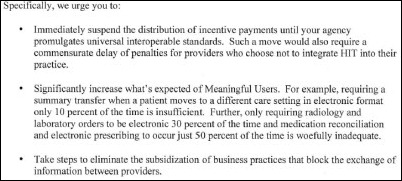

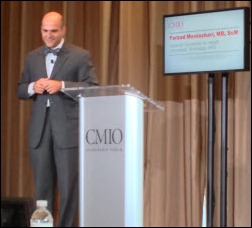
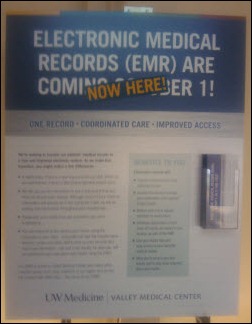




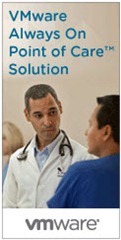

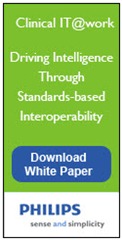






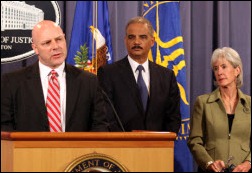
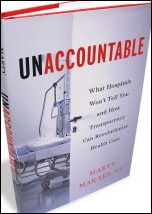





I thought the Annals of Internal Medicine article on patient notes was fatally flawed. The researchers admitted that their questionnaire only had “face validity,” because they did not use any psychometric methods. “Face validity” only means that the questionnaire looked like it measured what it was supposed to measure. Without any evidence of psychometric propereties, such as validity or reliability, I have no faith in their results.
Psychometric methods are covered in Introductory Psychology, and there are undergraduate and graduate courses in Psychological Tests and Measurement. The researchers ignored the science, and I’m surprised that the peer reviewers, editors, and readers haven’t picked up on this serious research flaw.
Second, they lumped “somewhat agree” and “agree” together. That’s not unusual, but not knowing the percentage of each category can shade the results. For example, if they report 38% agree/somewhat agree, that could be 1% agree and 37% somwhat agree, or vice versa, or anywhere in between. It also means that 62% disagree.
This study was not well done, and doesn’t deserve the attention it’s receiving.
Republicans call on HHS Secretary Kathleen Sebelius (copying Farzad Mostashari) to suspend HITECH payments …“squanders [$10B] taxpayer dollars and does little, if anything, to improve outcomes for Medicare.” Wow. I wonder if they are familiar with the landmark IOM report “To Err is Human” from 1999? I mention this because the MU roadmap was a long time coming. Going backward now is not the answer. I’d love to hear from Mostashari on this.
VMC did go “Live” on Epic, but not without some major issues that caused them to divert patients from the ER and also stop the admission of new patients. Seems they were short on shoulder to shoulder support folks and those they did have did not have the skills or training needed to support Epic or the VMC staff.
Valley Medical Center did go live with extensive shoulder to shoulder support including epic staff and very well trained trainers. It was an amazing go live with great success! We were all very proud of our clinical staff who did amazing job caring for our patients first and formost!